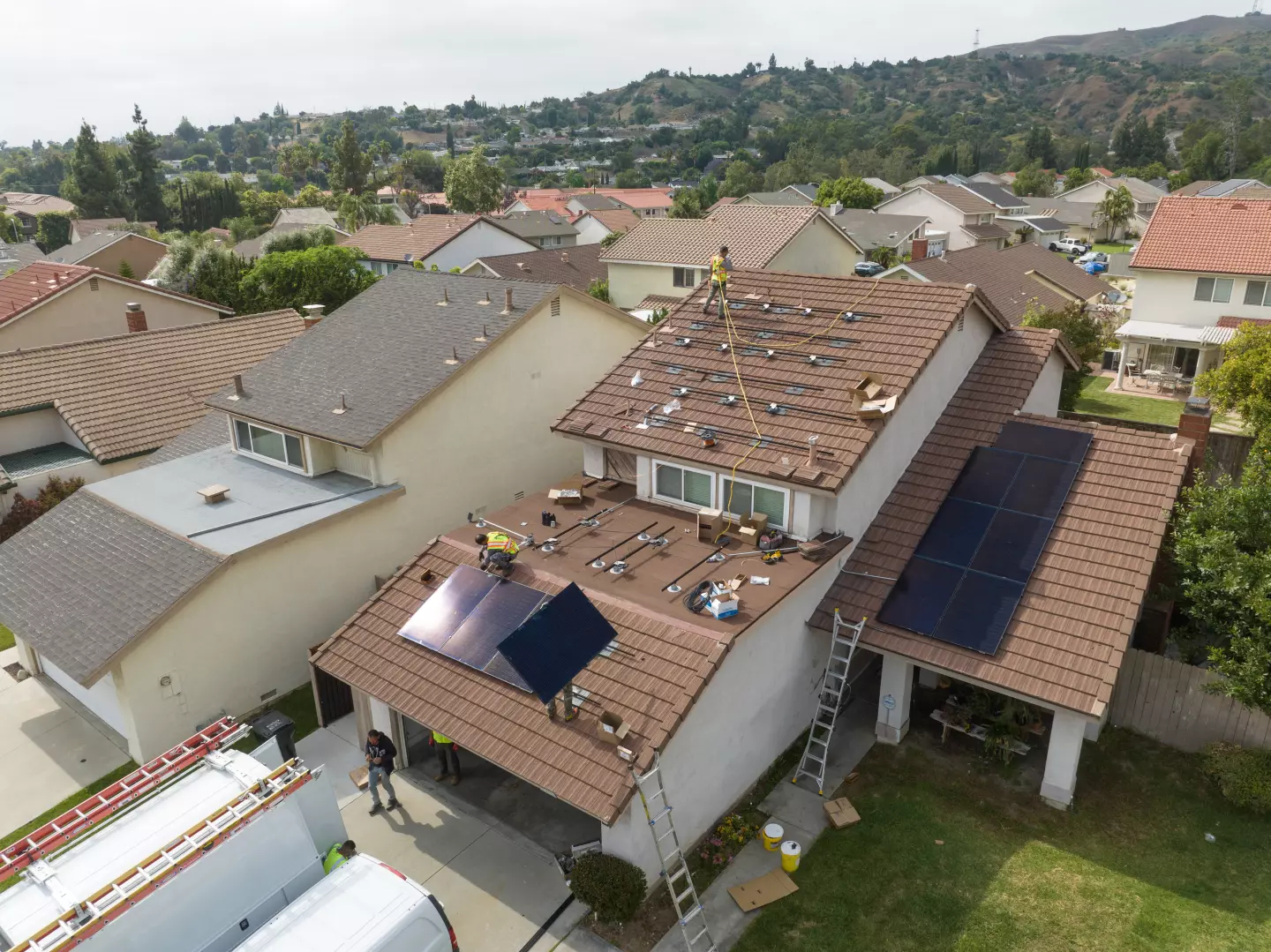Two Routes to Rooftop Solar
time:2023-08-25 09:19:26 Views:0 author:Jinan Freakin Power Ltd.
The average amount of electricity used by California households ranges between 500 and 600 kilowatt-hours per month. According to EnergySage, you could generate that much electricity with a 5-kilowatt rooftop solar system, which would cost about $15,000 in California. With the 30% federal tax credit, the cost drops to roughly $11,000. But if you add a battery, your costs could double, according to EnergySage. Low-income homeowners in eligible neighborhoods can apply to the Disadvantaged Communities — Single-family Affordable Solar Homes program for help buying solar panels, if funds are still available. Financial incentives of up to $3,000 per kilowatt — which may be enough to cover the cost of solar panels — are available to customers of Edison, PG&E and SDG&E in the state’s 25 most disadvantaged communities. If you’re not eligible for the subsidies, you’ll have to choose whether to own a rooftop system or let a third party put one on your roof to generate power for you. Community solar — in which panels are put on another property and then shared — is another possibility, but it’s in its infancy.

Buying the panels yourself. Financial advisors agree that it’s best to own the panels on your roof, if you can afford to do so. Real estate agents add that it’s much easier to sell your house if the solar panels have been paid for, rather than leased. And multiple studies and surveys have found that solar panels increase the value of your home, although just how much is up for debate. May Lam Kunka, a real estate agent with Compass in Pasadena, said rooftop solar is “a nice checklist item” for home buyers, “but I don’t think it holds that much weight. Predominantly, they’re looking for location, layout, size and condition. ... Solar, it’s just the added bonus.” The federal government’s 30% tax credit isn’t matched by the state. Instead, California offers property tax breaks for solar systems, said Neela Hummel, a certified financial planner in Santa Monica: The value of the rooftop solar system you install will be excluded from your property tax assessment. So even if you spend $20,000 or more to go solar, your home won’t be reassessed, nor will the $20,000 be added to your home’s value for tax purposes.
Unless you happen to have that much cash to spare, though, you’ll have to borrow money, which is costlier now that interest rates are relatively high. Hummel said a home equity line of credit is probably the best option, because the interest rate could go down over the course of the project if inflation subsides. You’d need to have enough equity in your home, though, to back up your borrowing. If not, one option is a “solar” loan — a type of personal loan for home improvement whose interest rate is tied to your credit rating. For example, SoFi offers one with interest rates ranging from about 9% to almost 26%, which is higher than you might pay on your credit card balance. But if you go this route, make sure to get more than one quote and take a hard look at the financing details, said Timothy Mulroy, a wealth management advisor for Northwestern Mutual. For example, he said, a solar loan might show an interest rate of 4%, but you might not realize that hefty fees were added to the purchase price to buy down the rate. One thing you can do with a solar loan, Hummel said, is break it into parts — one sized to match the amount of the tax credit you’ll receive, the other to cover the rest of the cost. That way, you can pay off the first part as soon as you get your tax refund. A third option is Property Assessed Clean Energy financing, which you repay through assessments on your property tax bill. Although it tends to offer low interest rates and long repayment periods, the program has drawn so many complaints from homeowners that Los Angeles County no longer offers it. (It’s still available in the county through a slew of other sponsors.) One other point of caution from state regulators: A PACE loan is attached to your property, not to you, which can make your home harder to sell.
Buying just the power. There are two relatively common ways to substitute rooftop solar for the local utility’s electricity without having to buy panels: lease deals and solar power purchase agreements. In both cases, solar panels will be installed on your roof, but they will be owned and maintained by a solar energy company. So instead of a big upfront cost, you’ll face a long-term commitment to pay for power that’s cheaper than what your utility supplies — assuming that utility rates keep going up. It’s a problem if they don’t, because lease deals and purchase agreements typically raise the fees you pay every year by a few percentage points.
Leases typically run for 20 to 25 years. Afterward, you may have the option to buy the panels at a discount (although they will be approaching the end of their useful life). Otherwise, off they go. While they’re on your roof, you’ll pay a monthly fee to use whatever power they generate. In a power purchase agreement, you’ll be able to buy power at a discount for 20 to 25 years, paying just for what you use. The more power you buy through the PPA instead of your utility, the greater the savings. The PUC’s new rules have thrown a wrench into these deals by paying substantially less for the excess power the panels generate during prime daylight hours. So companies are encouraging customers to add batteries to their systems, Aggarwal of EnergySage said, so they can sell it to the grid later in the day when rates are higher.
For example, Sunrun’s main offer in California now is a PPA that includes a battery — not for backup power, but to store power for sale later in the day, said Paul Dickson, the company’s chief revenue officer. The cost of the battery means Sunrun customers don’t get as big a discount on their electricity as before, he said, but most solar customers in California are still able to save 10% to 30% or more. Mulroy said leases and purchase agreements may be the way to go for people who can’t afford to pay cash for a rooftop system and have a low credit score, which would raise their borrowing costs. Such deals might also make sense for people who don’t owe any federal taxes, and so couldn’t take advantage of the big federal tax credit, he said. One important caveat for leases and purchase agreements: If you have to move or just want out of the deal, you’ll face a hefty early termination fee. And you probably shouldn’t count on prospective home buyers to rescue you from your contract. “In general, home buyers are leery of taking over leases, so again another strike against leases,” Hummel said. “If you’re going to be selling your house in three years, maybe now is not the time to invest in solar.”




